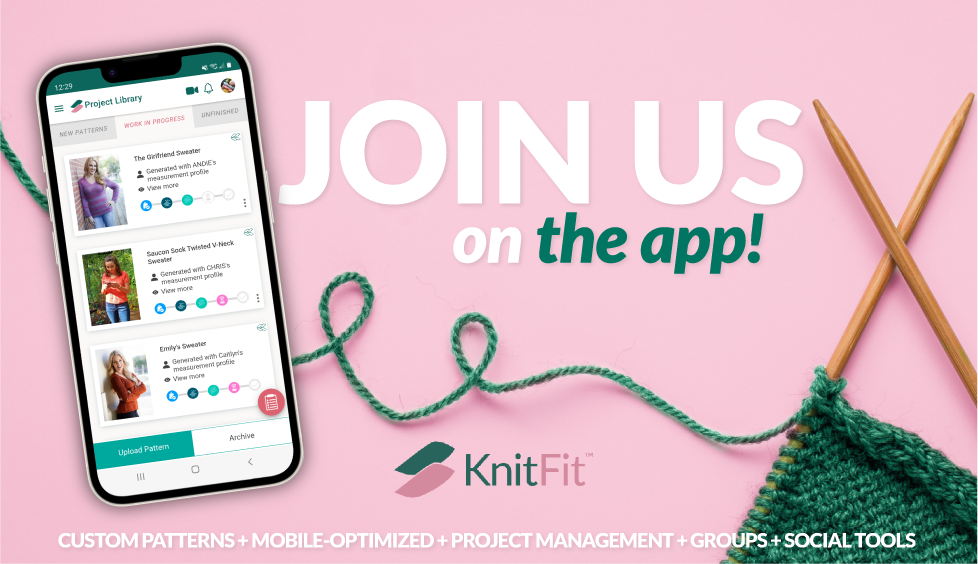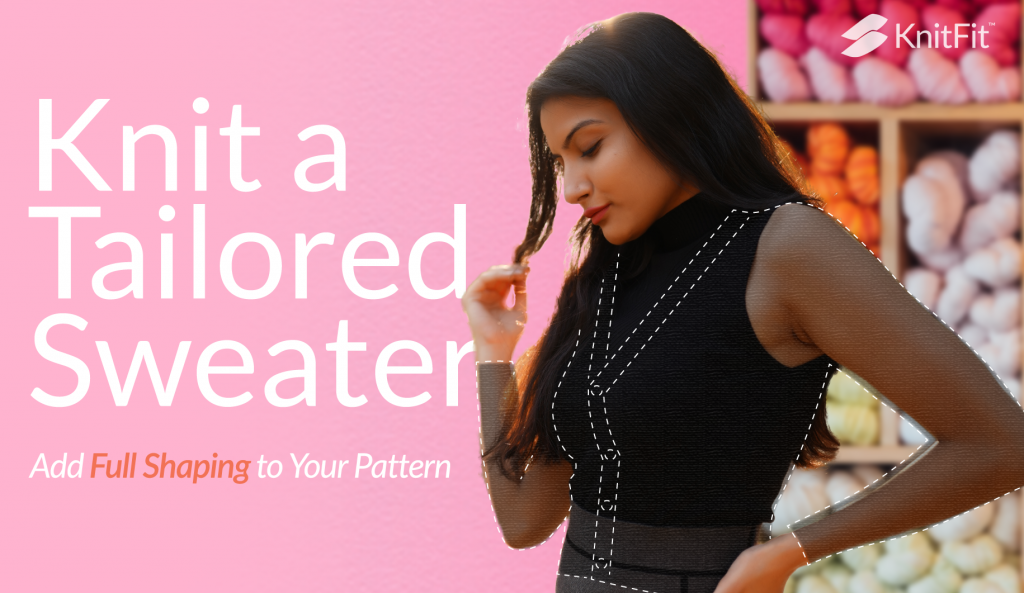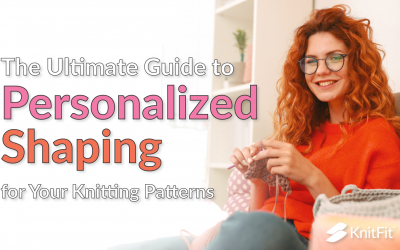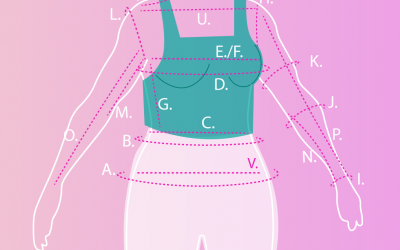Knit a Tailored Sweater: Add Full Shaping to Your Pattern
For generations, we’ve been happily knitting patterns in sizes that were intended to include the majority of sweater wearers. With a knitting community so dynamic, a vocabulary so specific, a craft so complex, we’ve been challenged and entertained by existing knitting techniques. We can knit garments for a lifetime without the need to incorporate techniques from other crafts, but should we?
With technology availing us of ever more choices, modern knitters also deserve more choices particularly with the sizes we knit for our bodies. We can now harness the longstanding sewing technique of tailoring into our knitted garments using KnitFit™ custom pattern generation. If you want to knit a tailored sweater for reasons of size, style, comfort, or just for the fun of it, that choice is now yours! That choice is made through selecting a specific shaping option during pattern generation: Full Shaping.
If you haven’t yet tried the KnitFit™ app, join now and generate a free custom-sized pattern!

Subscribe to KnitFit™ Blog and advance your skills!
How Full Shaping Helps You Knit a Tailored Sweater
One of three shaping options available for custom pattern generation, Full Shaping allows you to knit a highly tailored sweater or top. Opting for Full Shaping produces pattern instructions for a garment that directly follows your body shape. Subtle Shaping and No Shaping are the other two options you’ll see during pattern generation, and the resulting garments respectively follow your shape to a lesser degree or not at all.
Before we go deep into Full Shaping, read an overview on shaping options for custom patterns:

BASICS OF SHAPING
“When you knit your own clothes, you should be able to choose the fit you want.”
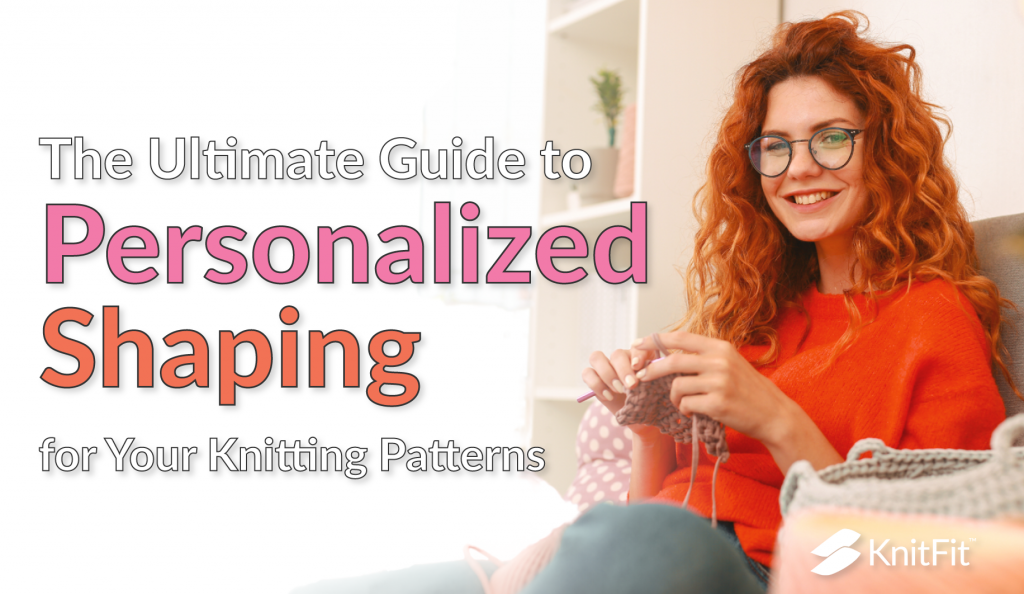
READ | The Ultimate Guide to Personalized Shaping for Your Knitting Patterns
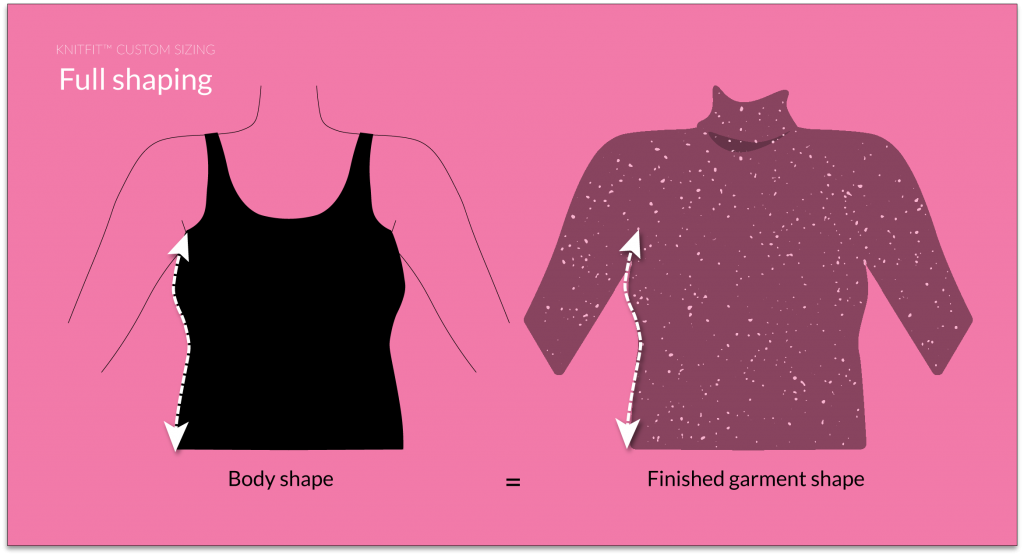
The Benefits of Full Shaping
Accurate fit across all areas of the torso
With a garment that directly mimics the shape of your body, the implications are clear: accuracy of fit in all areas of the torso from bust to waist to hips, and correct proportions in torso length as well as front and back.
What problems does Full Shaping solve?
However you decide to use full shaping to solve past fit issues is a win! Full Shaping often solves fit issues for people with body shapes that don’t fall within the “standard proportions”—a figment of our collective imagination that frankly, doesn’t describe many real people. But say you don’t typically have a problem with traditional patterns–Full Shaping can still give you an even more comfortable and personalized fit.
One classic application of Full Shaping is in optimizing patterns for proportionally larger busts. For example, a pattern size large enough for a full bust typically includes a lot of extra fabric in the waist and hips. This would not be the case when you choose Full Shaping with a KnitFit™ custom pattern. Or, if you are long-waisted or short-waisted, a standard pattern does not adapt to your unique proportions. The Full Shaping option provides you with a pattern to solve the unique fit issues you have experienced in the past.
Championing the wearer’s choice
Full shaping together with KnitFit’s other shaping and sizing options empower knitters with a fit and look of their own choosing. Traditionally, knitting patterns were limited to the designer’s preferences: patterns often unintentionally include subtle messaging suggesting that certain styles of tops can ‘hide imperfections’ or ‘reduce attention in problem areas.’ Knitters of all shapes are capable of making their own choices about what they want to wear. Why not allow knitters the option to create something fitted that celebrates their curves if they want to, or something loose and boxy that lets them make a minimalist statement?
Unfortunately, the reality is that designers of today are being given an impossible task—no designer can write a pattern for every body size and shape. Designers, just like knitters, are in need of new tools in order to expand this craft. With Full Shaping and its sister shaping options, knitters can finally create any garment they want in any size and any shape, for any reason.

How Full Shaping Affects the Finished Object
If you have curves, which in terms of shaping means that there is a difference between the circumference of your waist, the circumference of your hips, or the circumference of your bust, your knitted garment will end up with the same curves. For example, if your waist is five inches smaller in circumference than your bust, your finished garment will also have five inches difference between waist and bust. If your bust is smaller than your hips, your garment will also have a smaller circumference at bust than hips.
Keep in mind that in addition to shaping, you will also be able to set the ease, or the extra fabric that provides drape and movement over your body. Ease is an option you will encounter in the pattern generator.

Pattern Generation
WATCH | Overview of KnitFit™ Pattern Generator
WATCH | Learn to generate a KnitFit™ Custom Pattern
Full Shaping is designed to solve fit problems for anyone looking for a great fit. However, you’ll want to consider a few variables while you plan your next custom-sized and shaped knitting project. We’ll walk you through considering length, ease, and other key variables when it comes to selecting a shaping option for your personalized pattern. Be sure to read to the end to get the most out of Full Shaping.
Considerations When Choosing Full Shaping
Want to Knit a Tailored Sweater? Planning is Key!
Before opting for any particular shaping, visualize the garment on your body. Your measurements may go through major or minor changes in circumference throughout the garment. Remember that these changes happen via increases and decreases made over the vertical length from hips to waist to bust. To accommodate a significant change of circumference from hip to waist, many decreases or increases will be needed over relatively few rows. This can result in a sharp angle in the finished garment.
Full Shaping works beautifully in longer garments (regular length (covering top of hip), tunic length, or long cardigan coat). In longer tops, the angle of changes in shape are reduced by having more rows to knit during increase or decrease sections.
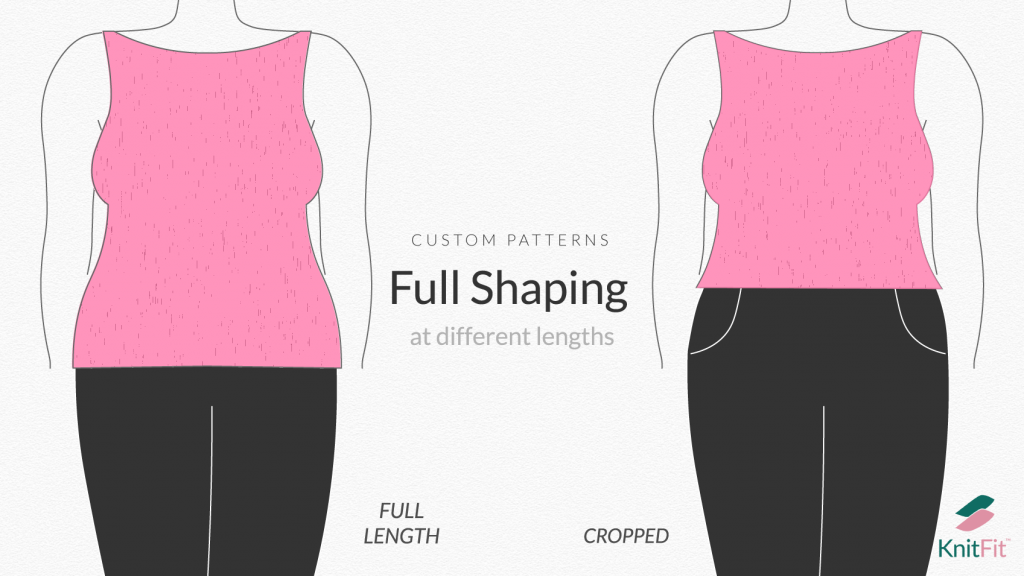
While Full Shaping accurately fits your body, the fully shaped sweater is not recommended for crop tops, because of the effect of the short length on the angle of change to the waist.
All About Ease in the Fully Shaped Garment
Get Smart About Ease to Successfully Knit a Tailored Sweater
Let’s explore how ease factors into Full Shaping. When you go to generate a custom pattern, you’ll input your desired ease along with your shaping selection, body measurements, and gauge. While you can use any reasonable amount of ease with Full Shaping, too little can reduce ease of movement and too much can create pockets of fabric with curvy shapes. The key thing to remember with ease is that it is applied all over.
If you ask the pattern generator for two inches of ease, then this two inches of ease would be present in the resulting garment at bust, waist, and hips.
1—4 Inches of Ease and Full Shaping
With Full Shaping, adding 1-4 inches of ease results in a top that’s form-following, easy to move in, and somewhat fitted. Towards the higher end of this ease range, you’ll be able to layer it over another top.
Zero to Negative Ease and Full Shaping
Less ease than that should be approached thoughtfully. While knitted fabric is inherently stretchy, allowing us to knit zero and negative ease patterns, fiber type will affect the amount of stretch and comfort in garments with less ease. Linen and cotton blends are less flexible, where bamboo tends to stretch vertically making a garment more closely fitted and therefore effectively reduces ease. Understanding fibers and their specific characteristics helps in making decisions on ease and fit.
Too much ease and full shaping
If you ask the pattern generator for six inches of ease and Full Shaping, you’ll end up with a garment that’s shaped for your body, only six inches larger. Your garment will be about six inches larger than your torso at any point on your torso. You could end up with pockets of fabric that aren’t filled by the convex areas of your body because of the ease.
TRADITIONAL SIZING
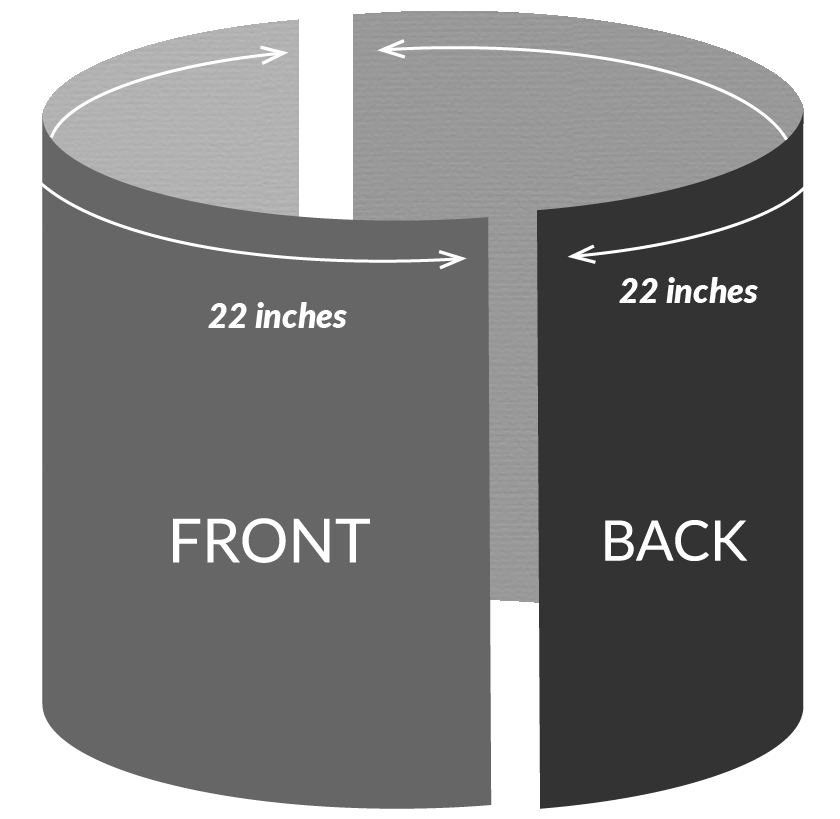
Bust circumference is 44″—so 22″ for front and 22″ for back.
KNITFIT™ CUSTOM SIZING
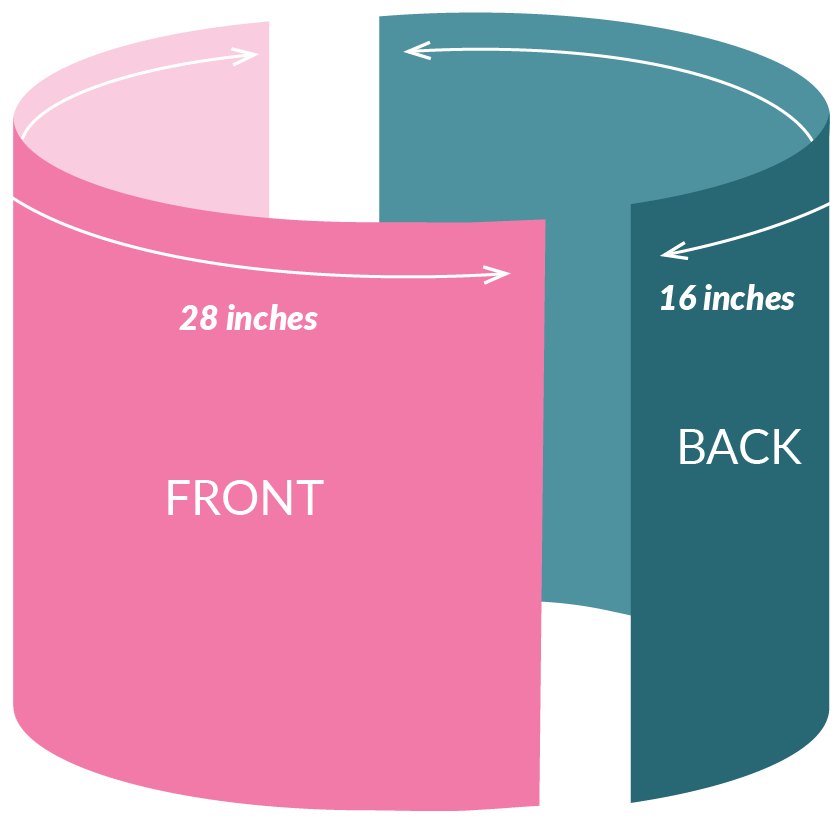
Bust circumference is 44″—the wearer’s front/back width determine width per side.
The advantage of Front vs. Back sizing in Fully Shaped patterns
Traditional (non-custom) patterns base sizing on your bust measurement, which means that for the torso section of your garment, you’re knitting a cylinder that is divided equally into front and back sections. This usually results in extra fabric across the back and a tighter fit across the bust.
For all custom patterns, including ones to which you apply Full Shaping, your back and front width will be assessed separately, such that you have the correct amount of fabric on the front and the correct amount of fabric in the back. This relieves that awkward fit and when combined with Full Shaping, gives you the most personalized fit possible. You can read more about how this works in our post, Correct Your Fit with Front and Back Measurements.

When Should I Elect for Full Shaping?
- Tailored
- Close-fitting
- Low or negative ease
- Longer garments: regular, tunic, or cardigan coat
- Not cropped
For an overview of Shaping in general, please review The Ultimate Guide to Personalized Shaping for Your Knitting Patterns.
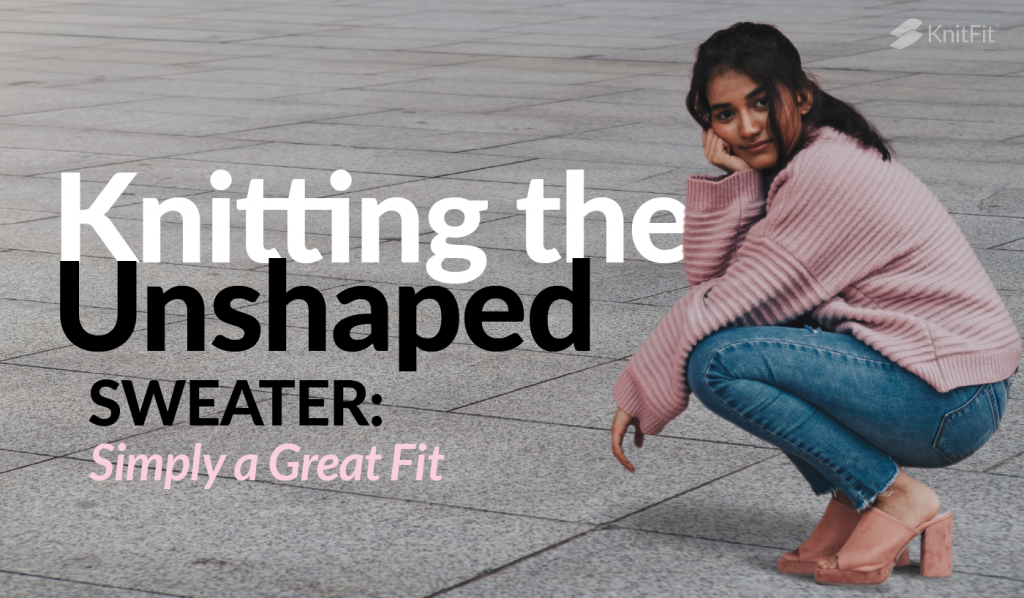
Improve accuracy of sizing in your project, even when knitting unshaped or “boxy” sweaters!
Knitting the Unshaped Sweater: Simply a Great Fit
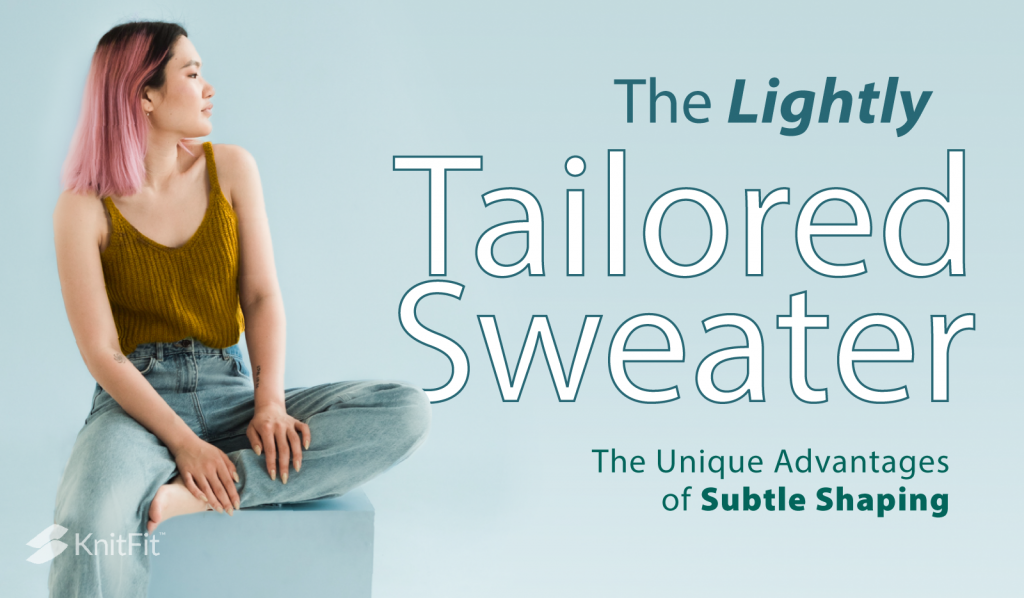
Subtle Shaping follows your curves, but without the fully tailored look. Learn to use shaping in small ways for big results!
The Lightly Tailored Sweater: The Unique Advantages of Subtle Shaping

Often, more fabric is required in the front than back, yet patterns treat these measurements as equal! We can do better, and it’s easy!
Correct Your Fit with Front and Back Sizing
When you’re ready to try out shaping, join the app and give it a try. The KnitFit™ app is free for one project, and available for use on Android and Apple devices, as well as on desktop.
Learn more skills for getting a great fit in your hand-knits: Subscribe to KnitFit™ Blog!
